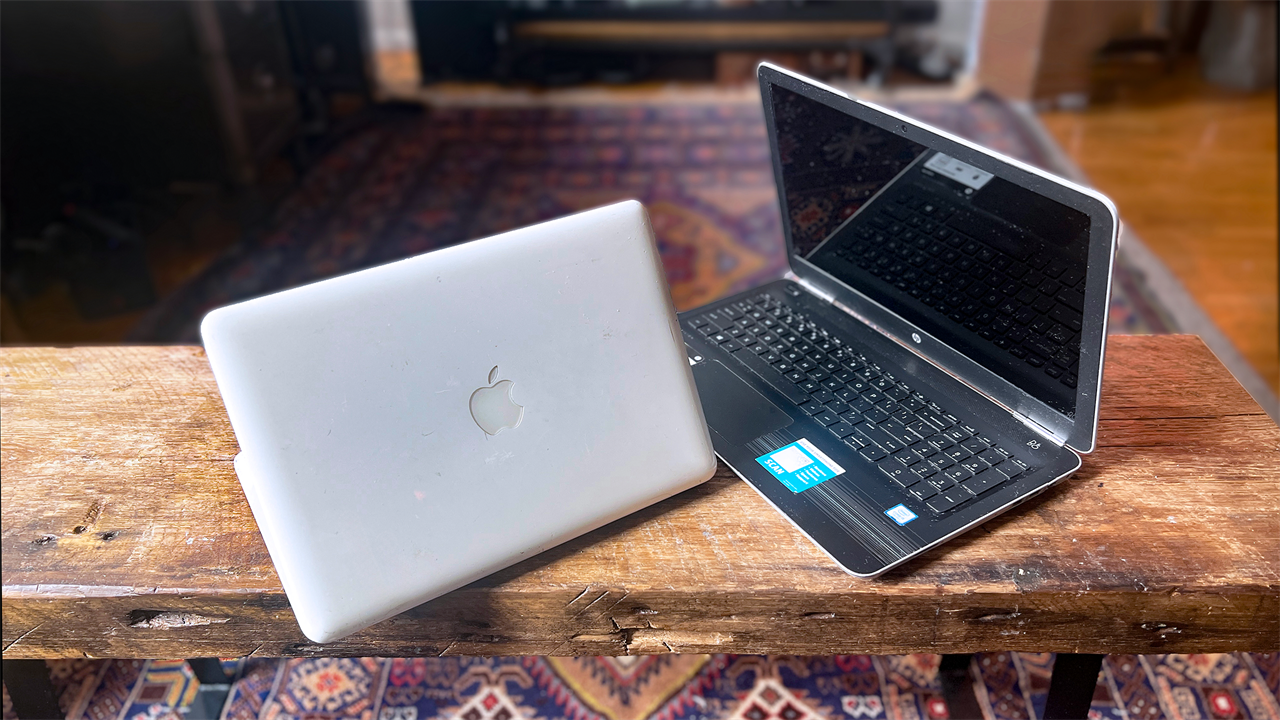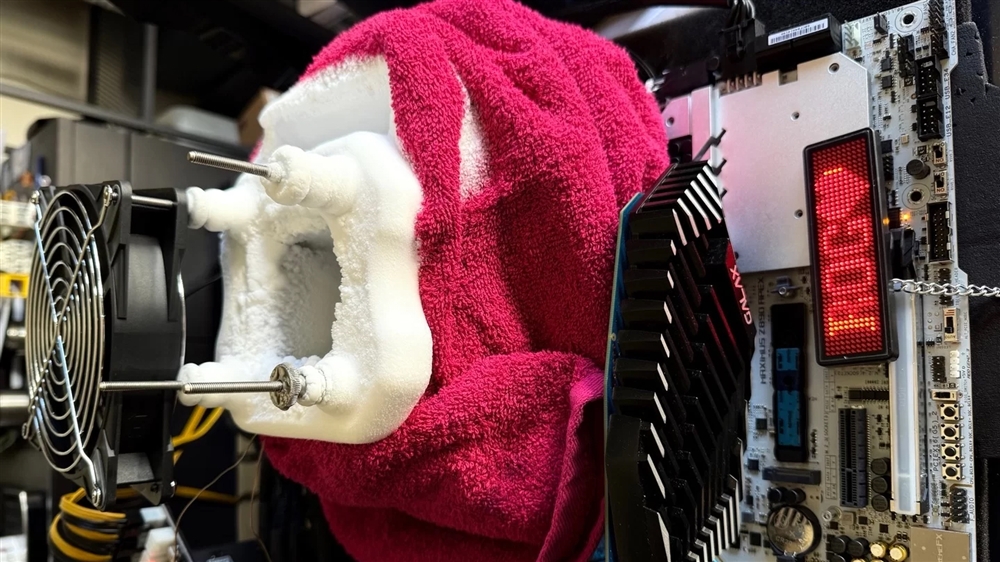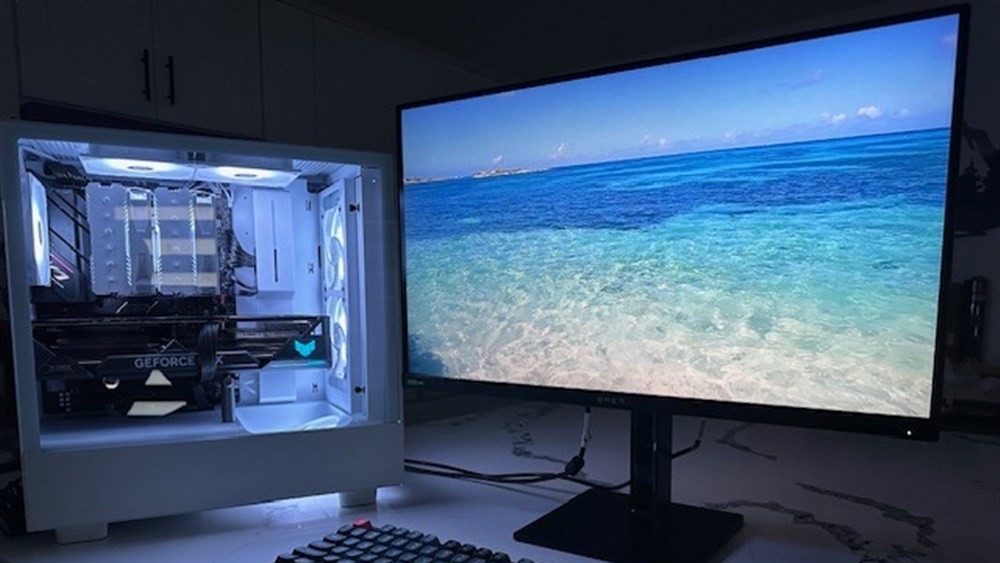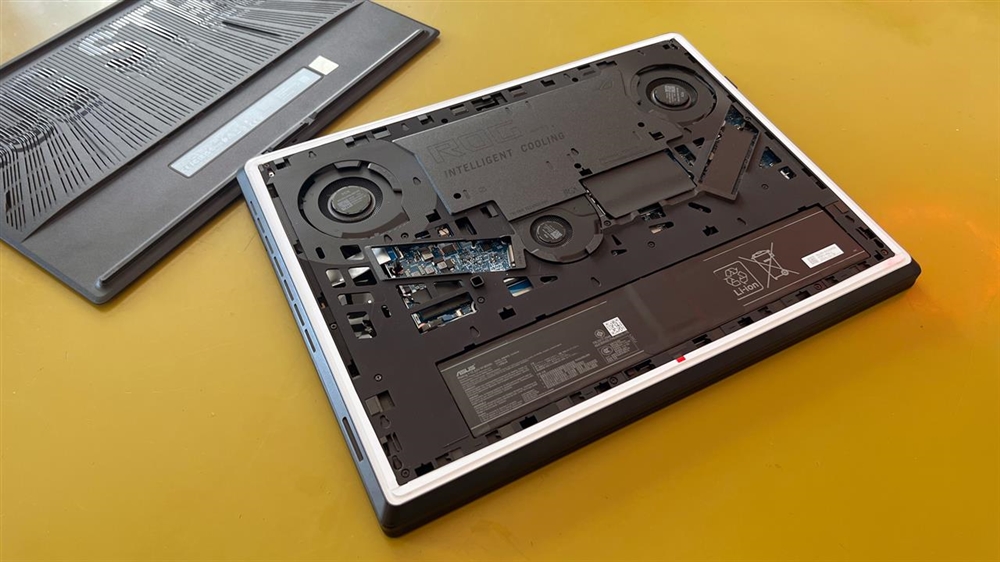How to Recycle a Laptop or Desktop Without Throwing Away Your Privacy
 Photo: Dan Ackerman
Photo: Dan AckermanWhether you’re about to unbox a brand-new desktop or you’ve been doing some spring cleaning and unearthed a stack of laptops of seasons past in your garage, you know that the way to get rid of them is not to toss them in the trash.
Discarded laptops and desktops contribute to the 62 million tons of un-recycled electronics that make up global e-waste. Those devices pollute the earth with toxic chemicals like lead, mercury, cadmium, arsenic, and beryllium leaching into the soil, seeping into groundwater, and releasing into the air.
April 22 is Earth Day 2025, and one way you can help is by either recycling or donating your old computer (both of which are options offered at Micro Center). Whichever one you choose, there are a few steps to take first to protect your privacy and to make sure you haven’t left anything behind that you won't get back.
Back up your files
The first thing to do is make sure you don’t lose any essential files like documents, photos, and videos. Back up everything that you want to keep to a storage device like an external hard drive or to the cloud.
To download to an external drive in Windows, connect the drive, go to the Control Panel and under System and Security, select Save Backup Copies Of Your Files With File History, and then select Turn On. In the Select A File History Drive window, click on the external hard drive you have hooked up and select OK. You should then be prompted to transfer your files.
Credit: Microsoft
For a Mac, connect the external drive, click the Finder icon from the Dock and in the Finder window, and drag your files over to the drive.
Of course the nature of a Chromebook means that your files are stored in the cloud on Google Drive, but if you want to put Chromebook files on an external drive instead of relying solely on that, go to Google Drive and press Command (Mac) or Ctrl (Windows), right click on the files, and then select Download. You will be asked to select the file format for each type of file. Then connect the drive, open the Files app, and drag the files to the drive.
You can also back up to the cloud from a Windows or Mac machine if you’d rather not use an external drive. There are plenty of cloud services to choose from, including Google Drive, iCloud, OneDrive, and Dropbox.
Sign out of services
Next you’re going to sign out of any services or apps that you have, even if you're going to wipe the computer before recycling it. That includes TV and movie streamers like Netflix and Max, music services like Spotify and Apple Music, and cloud storage like Dropbox.
Some services limit the number of device sign-ins per account, so you don’t want to find yourself down one because of a computer you’ll never use again and don’t have access to.
Deactivate software subscriptions
Similarly, if you have purchased and installed software, it’s possible that the license for it is tied to that computer specifically and that you’re limited in how many computers you can register (as is the case with Adobe products).
Go through any software you’ve downloaded and look into how to deactivate it. Before you do, make note of the serial number so that you can transfer the license to another computer.
Wipe the hard drive
Your most sensitive data is likely somewhere on your computer’s hard drive -- social security number, passwords, banking and credit card info -- leaving you open to identify theft and fraud. Make sure that no one gets their hands on any of it by wiping the hard drive.
Credit: Microsoft
For a Windows device, navigate to Settings>Systems>Recovery. Choose Reset PC. There will be some variations in this process depending on what version of Windows you have, but during the reset process, make sure to select "Remove Everything" and "Clean Data" when prompted and when it’s all done, hit Reset.
Credit: Apple
On a Mac, for MacOS Ventura or later, go to the Apple menu, select System Settings and then General. Scroll for Transfer or Reset and then select Erase All Content and Settings. For MacOS Monterey, go to the Apple Menu, select System Preferences, and then Erase All Content and Settings. Follow the onscreen instructions and then hit Confirm and then Restart.
Chromebooks have a quirkily named Powerwash feature to reset. To use it, sign out of the Chromebook, press and hold Ctrl + Alt + Shift + R. Select Restart, then Powerwash, and Continue. Follow the onscreen instructions but do not sign back in after or you will once again be the account holder for the Chromebook.
Donate or recycle
Your old computer might have some life left in it, in which case you could donate it and pass it on to someone who could use it, or it might be on its last legs and be ready to recycle. Either way, Micro Center can help.
You can bring your laptop or desktop to one of Micro Center’s locations and talk to an expert about which option would be best. You can even schedule the consultation and dropoff before your visit to save time.
If your computer is past the point of no return and recycling is its only option, it will be responsibly handled by one of Micro Center’s vetted vendors who are all certified and committed to environmentally friendly practices.
The even better news is that if your computer is in working order, it can be put to excellent use by an under-resourced child, their family, or community thanks to Micro Center’s partnership with Compudopt, where you can make a tax-deductable donation of working desktops or laptops.
Compudopt will refurbish donated computers and outfit them with essential software so that they can be distributed to individuals in need across the country to help them access education, employment, and economic opportunities. It’s a win for the earth and for humanity.
Read more about recycling and donation programs here: Give Your Tech a Second Life: Trade In, Donate, or Recycle









